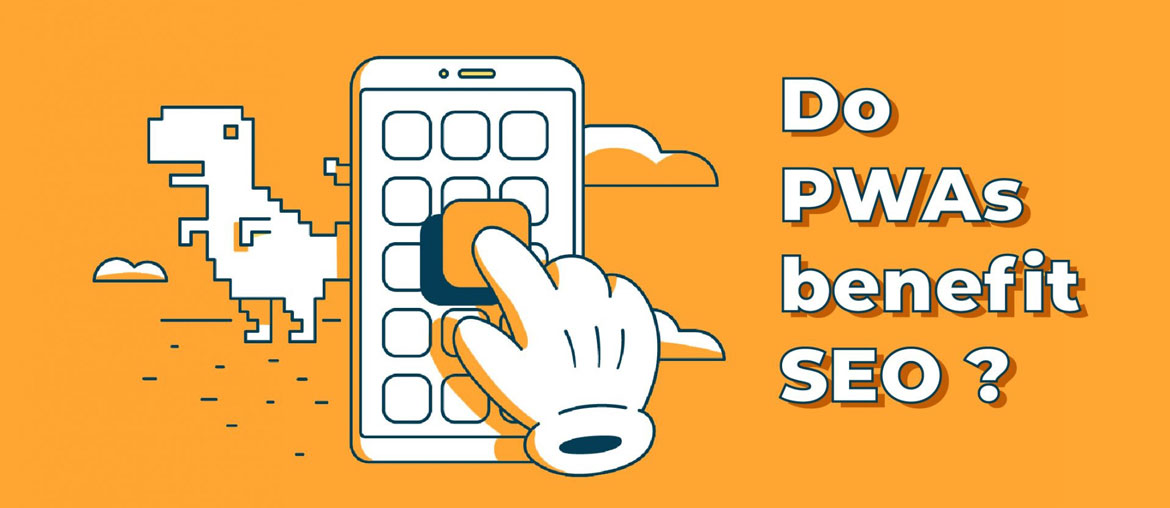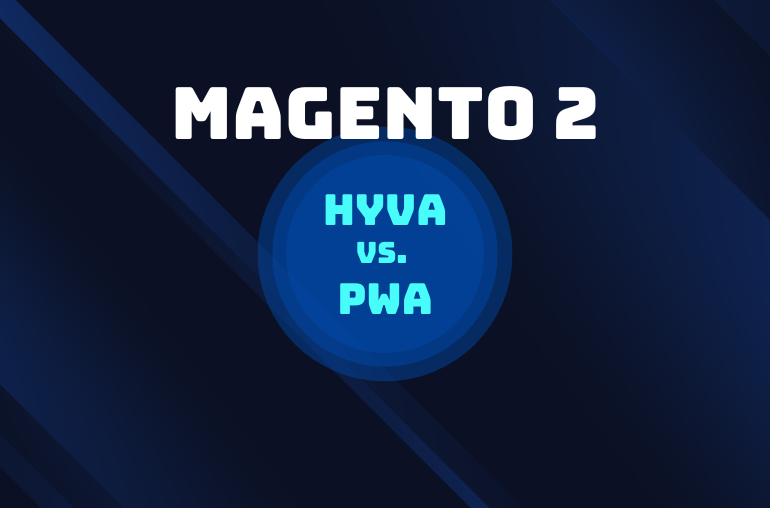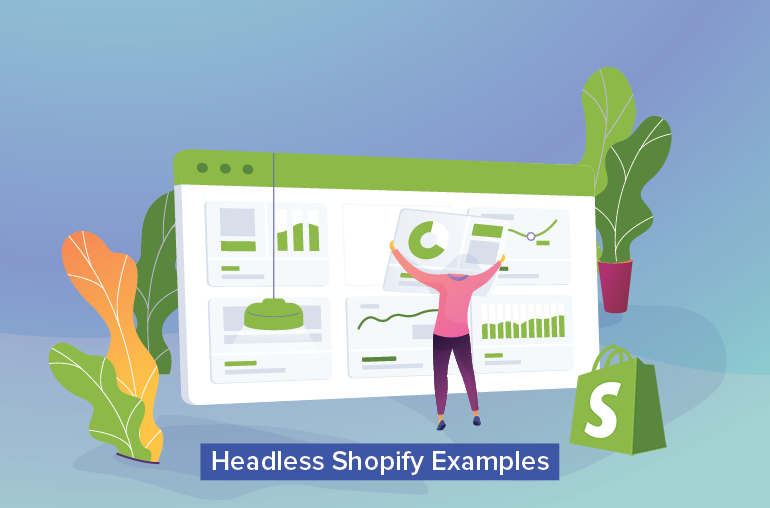In a world that is increasingly glued to their mobile devices and accompanying apps, it only makes sense to create experiences that aim to, as a senior software engineer at Google Alex Russell said, “blur the line between web content and apps.”
The last couple of years have made a few things very clear: If you have a business online, you need to make it your business to be mobile-first. Second, your mobile experience needs to be smooth and frictionless if you want it to translate into dollars. Lastly, smartphone users are super fickle and despite downloading over 113 billion apps in 2018, users still regularly use only about 9 apps per day.
So, you need to be on mobile. You need to be awesome on mobile. And people are probably not going to download and use your app regularly.
Yes, I’m talking about progressive web apps or PWAs.
Progressive web applications are popular with the search engine optimization crowd because they offer great promise for online marketing.
Regarding the question above, YES, Progressive Web Apps do benefit SEO. But how are PWAs good for SEO? Let’s find out in this article.
Table of contents
What is a PWA?
In the simplest possible words, a PWA is a mobile-friendly website that behaves like an app but doesn’t need to be downloaded to be used. Users have the option to save a PWA to their phone and launch it just like an app, but it’s totally optional.
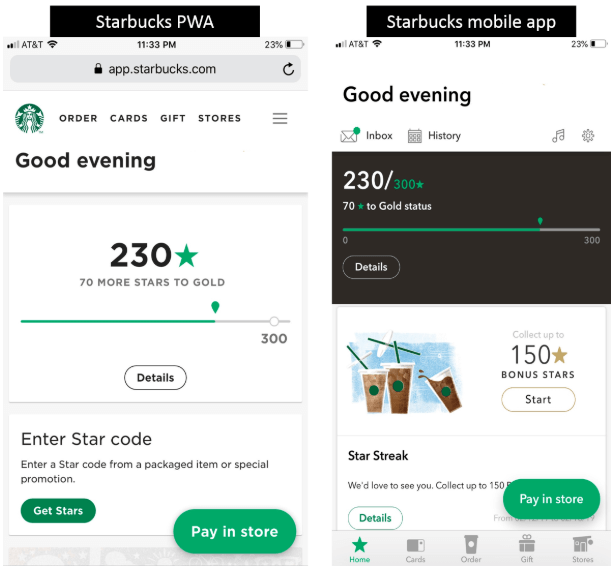
There are a whole host of perks that PWAs bring with them while overcoming the inherent disadvantages of building and maintaining a mobile site and a mobile app simultaneously.
You can dig deeper into a PWA’ definition as well as its fancy features via this article: “What Is PWA? All You Need to Know About Progressive Web Apps”
Four Key Technologies of a PWA
All of this is possible thanks to the use of four technologies, which are required for a PWA to work:
- Web app manifest file (which allows home screen access)
- Service worker (for offline support)
- Transport layer security (TLS) (ensures privacy and data integrity)
- Application shell architecture (allows fast loading times)
In contrast to a native app and a responsive website, a progressive web app offer a great number of benefits:

Does Google Crawl PWA Sites?
Progressive Web Apps make use of the flexibility of JavaScript, which means Google sees the single published page as a JavaScript site. A new URL may be created for the PWA, so the Googlebot will go ahead and crawl the page just like it would for any other page published on the web.
Google does crawl PWA sites just like it would crawl an AJAX or JavaScript site, but there are some issues that can potentially impact ‘crawlability’ — so developers need to be aware of how to optimize the site to ensure the page gets indexed appropriately.
Google’s SEO Recommended Best Practices for Progressive Web Apps
John Mueller of Google provided a detailed update on how Google handles PWAs and JavaScript sites in general back in March 2016.
In the post, he emphasizes the following:
- Don’t cloak to Googlebot. It’s important that the developer uses the feature detection and progressive enhancement technique so all users have access to the content. It’s also not a good idea to redirect to an unsupported browser page.
- Use rel=canonical when serving content from multiple URLs so that you aren’t guilty of duplicate content violations.
- Avoid the AJAX-Crawling scheme on new sites.
- Googlebot will not index URLs with “#” n them. Many Progressive Web Apps use the hash symbol in their URL structure, which means the search engines will drop everything beyond the #. The only way around this is to implement a URL structure using traditional SEO rules. This may be tricky for some sites and companies, but it’s a necessary step as we move forward.
- Test to see how Googlebot sees the page. You can make use of Google Search Console’s Fetch and Render tool to see your site exactly the way Google sees it.
- Make sure the required resources aren’t blocked by robots.txt.
- Reduce the number of embedded resources in the page (especially the number of JavaScript files required to render the page), since these might not be fully loaded.
- Use an accurate sitemap file to signal any changes to your website when using Accelerated Mobile Pages (AMP).
- Remember that some search engines and web service providers accessing content may not support JavaScript or might support a different subset.
In addition, Lighthouse is a useful tool from Google when it comes to PWAs. This tool was created by Google in order to improve the quality of web apps. This tool will show you if your web app is ready to become a PWA. When you added your website to this application, Lighthouse measures it on the four criteria and shows problems you should solve to increase the rate of your web app.
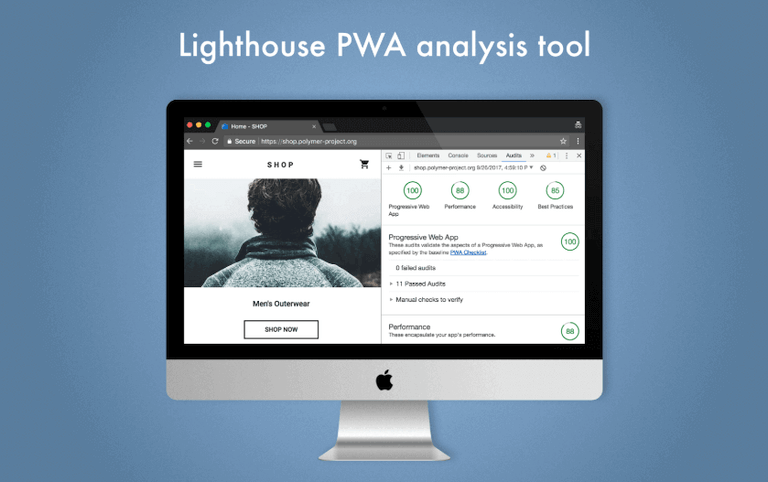
So, This is How Exactly Progressive Web Apps Help SEO
It is true that PWAs can improve your organic search profile significantly.
How?
By making your user experience better than your competition. Well at least better than it was before you upgrade to a progressive web app. When you deliver a great user experience people want to visit your site over competing options. When they see your brand in the results they will recall you gave them what they wanted and the experience was positive.
SEOs know click-through rate influences search position. More clicks or votes by searchers for a result and over time it moves up.
But that is just one metric you can measure. All the little things you do to make your site the best create the experience that rises above the information. This will indirectly and directly influence your SERPS and typically in a positive direction.
Faster Site Speed
This is undoubtedly one of the most exciting features of PWAs. Businesses can target users who might be on a slow data connection or even those who are offline with a PWA by using mobile development best practices like caching content ahead of time, compression, and more.
Why should you care about site speed? Because it directly impacts your SEO
With Google’s Speed Tests taking effect in less than a month, possibly the biggest advantage of PWAs is their greater speed when compared to other mobile platforms and native apps. And it’s not just Google that’s demanding faster sites – it’s YOUR USERS! Most users will abandon a mobile site if it takes more than three seconds to load. (Do yourself a favor and check your site speed here!) And if your site isn’t up to speed, they’re gone.
Forbes saw a massive speed improvement once they switched to PWAs, reducing their mobile load speed from 3–12 seconds, all the way down to 0.8 seconds! So to ensure that your brand is as close to the top of Google’s search list as possible, it’s time to make PWAs your brands first pick for mobile strategy.

Better Engagement
Google dictates the fundamental requirements that a website needs to fulfill to qualify as a progressive web app. A smooth user experience including easy navigation, timely push notifications, cross-browser compatibility, responsive pages across all devices are a few important requirements that also lead to a growth in engagement.
PWAs can mimic real mobile apps in an incredible way. With a PWA, you’ll still have the option to save it to your home screen, where it will appear as an icon on your device just like an app, but you won’t have to go through the app store download process. And because there’s no download, PWAs require significantly less storage than native mobile apps. Starbucks created a PWA that was .4 percent the size of its own native app! And, content updates happen automatically upon refresh allowing users to gain access to the latest features, functionality, and security updates without ever lifting a finger (or tapping that annoying “Install Update” button).
Recommended reading: PWA vs Native App: Which Suits You Better?
With the app now on their mobile phones, the chances of interaction and engagement become exponentially higher, as experienced by Forbes magazine when they launched their own PWA. Users were notified every time new content was available via push notifications. With lightning-fast page load times, quick transitions and light page design, Forbes’ PWA managed to achieve the following:
- Increase scroll depth by 3x
- Improve sessions per user by 43%
- Get a 6x increase in readers completing articles
- Double their engagement rate which means a 100% increase in engagement
In the case of a publishing site like Forbes, high engagement equals high conversions, all thanks to their new PWA.
We know that website engagement metrics like session duration, click-through rates, and bounce rates have a direct impact on search rankings. As Larry Kim demonstrates here, time on site has a definite correlation with your organic search rankings. The higher the session duration, the higher your likely ranking on Google.
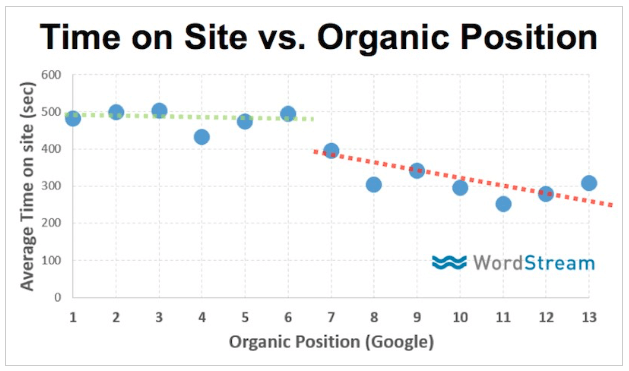
You can say hello to page one on Google, all thanks to PWAs and their superior website engagement rates.
It’s All About the URLs
Progressive web apps truly embrace SEO best practices in every sense of the term. From clear and concise meta descriptions to adding Schema.org data for better indexing and parsing of site data by search bots; a search-optimized website is more likely to make the PWA cut than others.
PWAs don’t require different “mobile.site.com” types of URLs to offer a great experience on mobile devices. They’re automatically configured to provide a consistent experience, no matter what the device.
Another bonus is that PWAs are necessarily HTTPS enabled. Not only does this bump up your site on organic search results but also reassures users about the security on your site leading to lower bounce rates, higher click rates, and likely higher conversion rates.
Each page comes with its own unique URL, making even deeply embedded pages easily crawlable and discoverable by search engines. Unique URLs for each page also makes sharing pages on social media and other sites much easier, not to mention more transparently trackable.
With pre-caching in place using service workers, all URLs on PWAs load even when your device is offline. This empowers users who operate on older devices or poor network connections.
Wrapping it Up
Progressive Web Applications are great for SEO because they are meant to deliver the best web experiences. But like anything else, developers and marketers can mess things up.
Follow the web’s best practices and you will reap the benefits of great organic search traffic. This means making your site mobile first, fast on mobile, usable on all screen sizes and has sound on page SEO.
PWAs help you build long-lasting relationships with customers. That is a great reward, but you will also experience a universal lift, like organic search, because your site puts user experience first.
If you follow all these best practices then you will be successful, even if you are not targeting organic search traffic.
Time to pick up on those cues and invest in PWAs that combine ease of the mobile web with the speed and user-friendliness of a mobile app. Two for the price of one is what you get with PWAs. So when are you going to build yours?

